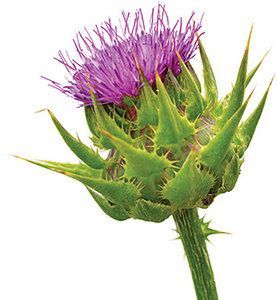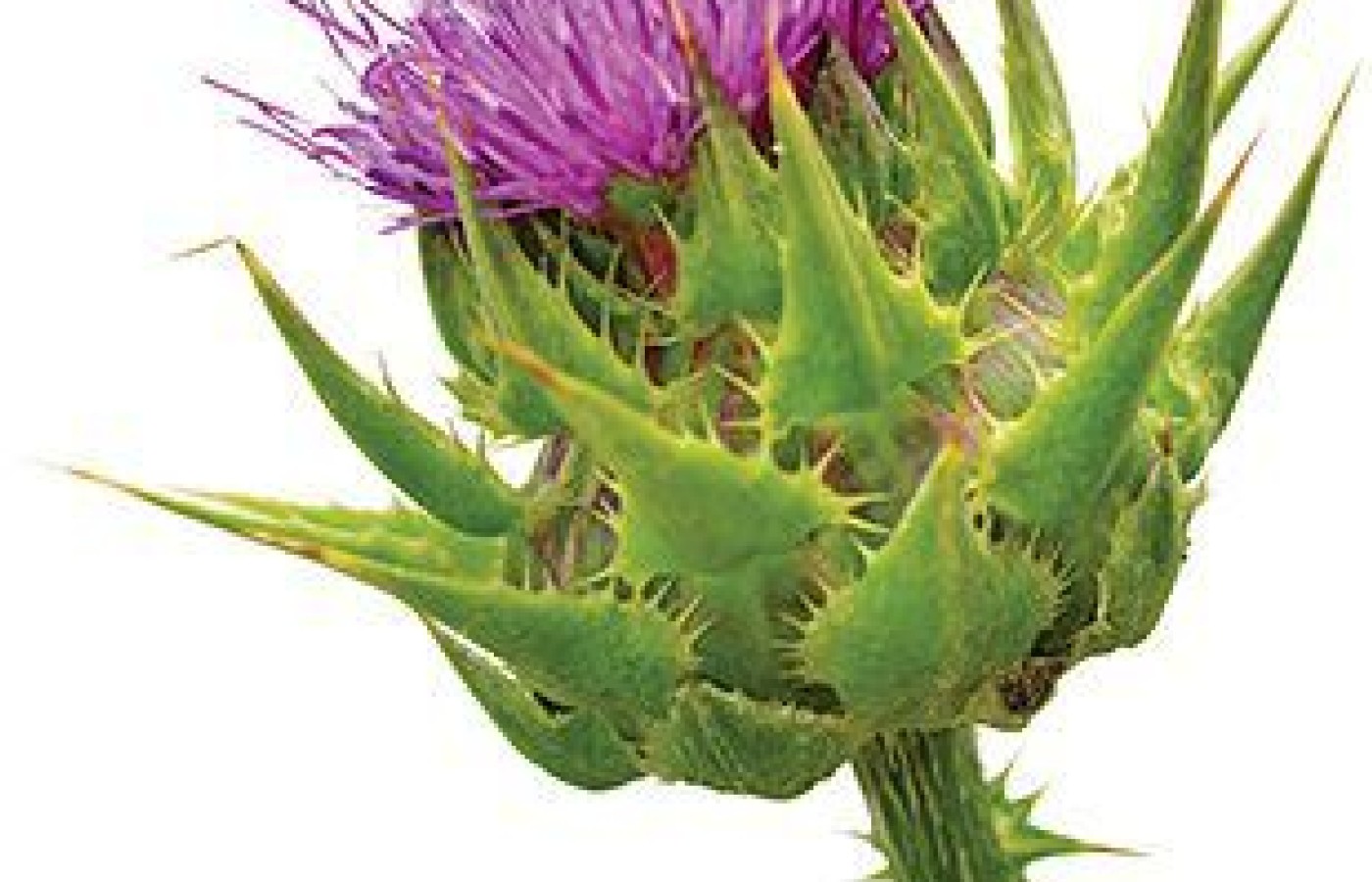New York's highest court of appeals has held that no-fault insurers cannot deny no-fault benefits where they unilaterally determine that a provider has committed misconduct based upon alleged fraudulent conduct. The Court held that this authority belongs solely to state regulators, specifically New York's Board of Regents, which oversees professional licensing and discipline. This follows a similar recent ruling in Florida reported in this publication.
The Amazing Clinical Versatility of Milk Thistle (Part 1)
Most of us know that the standardized extract from the seeds of milk thistle (Silybum marianum) is probably the best-proven herb for protecting the liver from chemical and inflammatory damage. Benefits also have been shown for a wide range of liver disorders, including hepatitis and cirrhosis.1 But this extract, which is typically (and perhaps inaccurately) referred to as silymarin or silymarin extract, also has generated some intriguing outcomes in other clinical studies: surprising results that indicate a wide clinical versatility. Let's discuss some of these findings.
Clinically Proven for Combating Allergies and Inflammation
In a double-blind trial, 94 patients suffering signs and symptoms of allergic rhinitis (hay fever) and with positive skin-prick tests to common aeroallergens randomly received either silymarin extract (420 mg/day) or placebo for one month.2 Routine antihistamine treatment was also allowed. Based on the Sino-Nasal Outcome Test (SNOT-20!), an improvement in clinical symptom severity was observed in both groups, but the improvement was significantly greater in the herbal group (9.2 for the silymarin group versus only 2.2 for the placebo group).
In a 2009-published double-blind, clinical trial, 220 patients with painful knee osteoarthritis (OA) were randomized into five groups, receiving silymarin (300 mg/day), piroxicam (20 mg/day), meloxicam (15 mg/day) or a combination of silymarin with each of the anti-inflammatory drugs.3 There was no placebo group in the study design and treatment lasted eight weeks.

Treatment with silymarin significantly reduced serum levels of the inflammatory cytokines interleukin (IL)-1alpha (by 56 percent) and IL-8 (by 58 percent) (P < 0.02 compared with baseline), and the complement proteins C3 (by 81 percent) and C4 (by 45 percent). Adjunctive use of silymarin with the drugs gave mixed results for these measures of inflammation (no effect with meloxicam and a significant lowering with piroxicam). The drugs on their own generally exhibited minimal beneficial or even adverse effects. Unfortunately, the trial did not provide data for clinical OA symptoms.
An earlier study also demonstrated that co-administered silymarin decreased the renal and hepatic toxicities of these drugs in OA patients.4
Although these uses might seem novel for silymarin, they are consistent with several lab studies demonstrating various anti-inflammatory, antiallergic and immune-modulating outcomes for the herbal extract. However, results from experimental models do not necessarily reflect on clinical outcomes for herbal treatments, so the above clinical findings do add significant credibility to the use of silymarin for allergic rhinitis (and perhaps other allergies) and OA. More studies are needed, however, especially ones assessing clinical outcomes in OA.
Making Mothers' Milk Flow Well
One surprising new role for silymarin extract is the enhancement of milk production in healthy, breast-feeding mothers, verified by a clinical trial. Following an agricultural trial demonstrating silymarin promoted milk production in dairy cows, a group of Italian scientists investigated its galactagogue (enhancing milk flow) value in humans.5 The trial enrolled 50 healthy lactating women who received a daily dose of 420 mg of micronized (very fine) silymarin or an identical placebo for 63 days.
At both days 30 and 63 of the trial, there was a clear and significant difference over placebo in favor of the silymarin group in terms of total milk production (P < 0.01). There also appeared to be a cumulative treatment effect, with a 64.4 percent increase above baseline at day 30 for the silymarin group (versus 22.5 percent for placebo), which increased to 86 percent by day 63 (versus 32.1 percent for placebo).
Analysis of the nutritional value (water, fats, carbohydrates and proteins) of the milk confirmed no difference between the active and placebo groups. So, the herbal extract did indeed produce more milk of the same quality. Testing of the milk from a smaller group of women who received 1,800 mg/day of silymarin for five days confirmed no detectable levels of silymarin actives, indicating no issue for the baby.
Given the common name of "milk thistle," why is it so surprising to learn of silymarin's galactagogue effects? The answer is that the most likely source of this common name is the appearance of the plant, not any traditional galactagogue usage. Specifically, the white stripes on the leaves were said to represent the milk of the Virgin Mary (hence the English common name, "St. Mary's thistle").6-7 There is no reference to any galactagogue action in texts reflecting traditional use, such as the British Herbal Compendium.8
The authors of another paper on the topic9 claim the book of Newall and colleagues10 carries a reference to galactagogue use. However, that text was found to contain no such information on the pages cited or anywhere else. Perhaps this confusion serendipitously led to its discovery, or maybe this is a previously unrecognized example of the doctrine of signatures (in which the appearance of an herb suggests its therapeutic activity).
The well-known book A Modern Herbal, by Maud Grieve, does talk about this herb enhancing milk flow, but she is clearly referring to the use of the leaves, not an extract of the seeds.
A lab study has provided a possible mechanism behind the galactagogue activity of silymarin.11 A dose-dependent increase in prolactin levels was observed in female rats after the administration of 25-200 mg/kg orally for 14 days. Prolactin levels remained elevated even after the herbal extract had been discontinued for 66 days. The prolactin-inducing activity of silymarin extract was antagonized by the drug bromocriptine, suggesting dopamine D2 receptors are involved. Such hormonal effects need to be investigated in lactating women.
References
- Bone KM, Mills SY. Principles and Practice of Phytotherapy: Modern Herbal Medicine, 2nd Edition. United Kingdom: Elsevier, 2013: pp. 861-884.
- Bakhshaee M, Jabbari F, Hosseini S, et al. Effect of silymarin in the treatment of allergic rhinitis. Otolaryngol Head Neck Surg, 2011;145(6):904-909.
- Hussain SA, Jassim NA, Numan IT, et al. Anti-inflammatory activity of silymarin in patients with knee osteoarthritis. A comparative study with piroxicam and meloxicam. Saudi Med J, 2009;30(1):98-103.
- Hussain SA, Numan IT, Khalaf BH, et al. Iraqi J Pharm Sci, 2007;16(1):34-38.
- Di Pierro F, Callegari A, Carotenuto D, et al. Clinical efficacy, safety and tolerability of BIO-C® (micronized silymarin) as a galactagogue. Acta Biomed, 2008;79(3):205-210.
- Madaus G. Lehrbuch der biologischen Heilmittel, Band I. Hildesheim: Georg Olms Verlag, 1976: p. 830.
- Zeylstra H. Materia Medica Lectures, School of Herbal Medicine, UK, 1982.
- British Herbal Compendium, Volume 2. Bournemouth: British Herbal Medicine Association, 2006: p. 282.
- Capasso R, Aviello G, Capasso F, et al. Silymarin BIO-C, an extract from Silybum marianum fruits, induces hyperprolactinemia in intact female rats. Phytomed, 2009;16(9):839-844.
- Newall CA, Anderson LA, Phillipson JD. Herbal Medicines: A Guide for Health-Care Professionals. London: Pharmaceutical Press, 1996: pp. 46-47.
- Capasso R, et al. Op Cit.
Editor's note: Part 2 of this article discusses the utility of milk thistle for serum ferritin and iron overload in various clinical circumstances.



